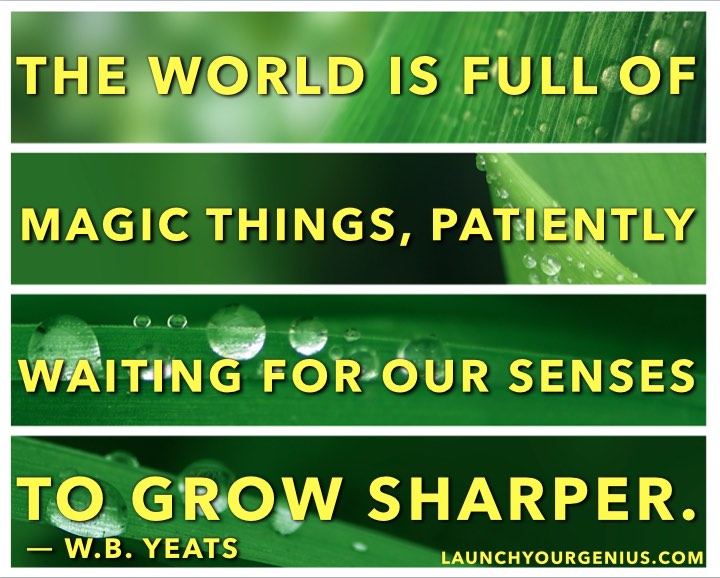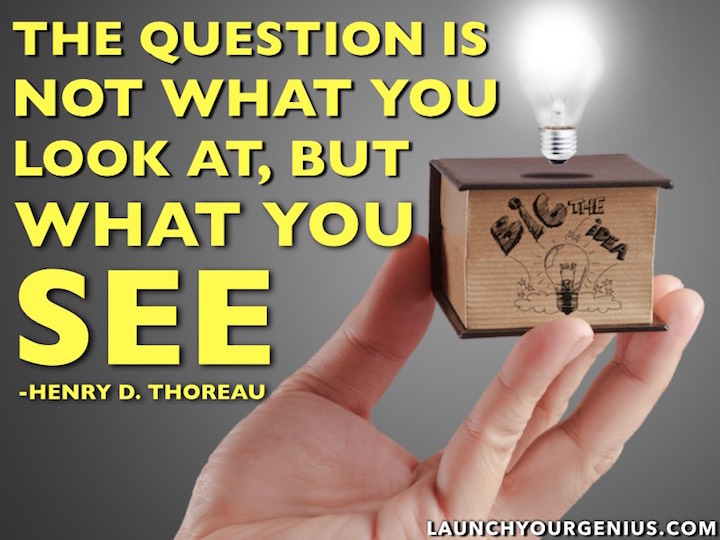“The world is full of magic things, patiently waiting for our senses to grow sharper.” ― W.B. Yeats
This is part-5 of the multi-part series on cognitive biases and how to get beyond them. Here are Part-1, Part-2, Part-3, and Part-4.
Here are the biases discussed so far:
1. Confirmation Bias
2. Hindsight Bias
3. Negativity Bias
4. Impact Bias and The Inaccurate Simulator
5. The False Consensus Bias or “most people are like me bias”
6. Attention Bias And The Tunnel Visioning Effect
7. Optimism bias Or the Wishful Thinking bias
8. Distinction bias
9. Anchoring bias
10. The Endowment Effect
11. Functional Fixedness
12. Projection Bias
Let us get on with the cognitive biases:
13. Information Bias
“All things are subject to interpretation. Whichever interpretation prevails at a given time is a function of power and not truth.” ― Friedrich Nietzsche
This bias happens when we make a miscalculation in the information of the data that we receive.
Information bias happens when we make errors in the following:
- Measurement of variable factors
- When we wrongly classify information
- Collect data with the incorrect tools
In an article titled “A Cultural Theory of Information Bias in Organizations” by Michael Thompson and Aaron Wildavsky from the Journal of Management Studies in 1986, the authors study this bias in detail.
The authors look at the role of the rejection of information in the context of organizational culture.
Information may be rejected due to many reasons, some of which are:
- The process of risk absorption
- Networking
- An attempt to protect current paradigms
- Expulsion
As an example, the authors explain the structures of an Everest expedition with their focus on leadership and information dissemination.
The expedition leader and the primary delegates have the responsibility of making most of the decisions. And they form the visible overground structure of leadership.
But in a twist to the story, the authors point out that the non-management part of the expedition can form their own information culture. Something akin to an underground leadership.
Sometimes, there are many camps and communication becomes difficult and even strained. This is when the underground leadership can also influence events. They can do this by withholding key information.
The overground leadership makes the key decisions on the basis of limited information.
And ironically, this lack of information makes them decide and support the wishes of the underground.
The authors ask:
“The key question is ‘In what way would which people, sharing which values, legitimating what practices, act to strengthen their own organization and/or to weaken their adversaries?’ How do they select data so as to convert it into information that will support the mode of organization they prefer? The dimensions of cultural theory are based on answers to two questions: ‘Who am I?’ and ‘How should I behave?'”
They answer the questions:
“The question of identity may be answered by saying that the individual belongs to a strong group, a collective, that makes decisions binding on all members or that the individual’s ties to others are weak in that his choices bind only himself. The question of action is answered by responding that the individual is subject to many or few prescriptions, a free spirit or one that is tightly constrained. The strength or weakness of group boundaries and the numerous or few prescriptions binding or freeing individuals are the social components of their social organization.”
Action Tips:
1. We need to keep the information bias in mind and how it may affect us. Especially in our personal life or in our interpersonal relationships.
2. Realize that the tools and frameworks used to collect and process the information may lead to preference and bias.
3. Are you preferring information of certain sources or people or situations to be more true and valid?
4. Is there value in allowing contrary information and other perspectives in the mix of ideas instead of rejecting them outright?
5. Are sub-teams withholding information for a share in the power and the control realm?
“Dream delivers us to dream, and there is no end to illusion. Life is like a train of moods like a string of beads, and, as we pass through them, they prove to be many-colored lenses which paint the world their own hue. . . . ” ― Ralph Waldo Emerson
14. Consistency Bias
“The question is not what you look at, but what you see.” ― Henry David Thoreau
As humans, we have a need to maintain cognitive consistency. This need for consistency takes the shape of a bias.
The effect is that we rearrange and draft the past to fit it with our current worldview and beliefs.
Research in neuroscience shows that long-term memory recall can be notoriously inaccurate. While recalling past beliefs, and behaviors, we may color them with strong current views and opinions.
This bias is similar to cognitive dissonance that I have discussed in past posts.
Cognitive dissonance was proposed by Leon Festinger in 1957. It is the mental discomfort created by holding and coming to terms with two conflicting attitudes.
These conflicting attitudes can cause dissonance or tension that demands to get resolved. This “ideal-reality” conflict is like the need to maintain consistency between past beliefs and the current world-view.
In a research article titled “Stability and Change in Political Attitudes: Observed, Recalled, and Explained” by Gregory B. Markus in Political Behavior (1986), the author discusses this bias.
The study used data from surveys of two biologically linked generations and across a 9-year span from 1973 to 1982.
Respondents were asked to state their positions on the policy of various issues that mattered to them.
Some of the topics surveyed included domestic spending on social welfare, equal rights for women and minority affirmative action.
They were also asked to state their preference of ideology ranging from conservative to liberal. The respondents were also given the chance to sidestep the questions if they had not given a topic much thought.
In 1982, the researchers surveyed the above topics again. In this survey, additionally, respondents recalled their policy positions that they had held in 1973.
Some respondents believed that there was a change in their views about the topics. The change respondents tried to come up with a reason why they thought this was the case.
The data showed that only a third of the respondents had recalled what their positions and views were in 1973.
He says
“When respondents in the panel survey were asked in 1982 to recall their attitudes of nine years ago, clearly the most salient piece of externally available information that they possessed was their current attitudes as they had just described them to the interviewer. Consequently, we should expect that, as in the laboratory studies, panel respondents’ recollections of their prior attitudes should be strongly biased toward their current ones.”
Respondents ended up with having recalled past views that correlated with their present self-concept and views on the topics.
Here is where the study gets even more interesting.
When asked why they thought their opinions and views changed, majority of the respondents had an explanation. It was as if they were searching their memory for circumstances that would account for the change in their opinions.
These circumstances could be historical or even autobiographical in nature. Some of the reasons for the perceived change of opinions included:
- Events in one’s life
- Social or political events
- The process of aging
- Other specific issues
People reason and rationalize the changes of opinion and self-concept to explain them. This explanation may maintain cognitive consistency with their current positions.
“It is only about things that do not interest one, that one can give a really unbiassed opinion; and this is no doubt the reason why an unbiased opinion is always valueless.” ― Oscar Wilde, Criticism and Reviews
Things to think about:
1. Long term memory recall can be inaccurate since we attempt to fill in the cognitive voids with current self-concept and beliefs.
2. Become aware that we have a need to maintain cognitive consistency over time. Sometimes we match the past with the present for that purpose.
3. Even though it may feel uncomfortable, change happens. Our current self concept does not have to match who we were in the past. Change is proof that we are enjoying and participating in a wider variety of beliefs and topics.
4. Make sure to understand that consistency might be causing anxiety and tension. Stress may result in an attempt to match up your past with who you are now. This dissonance is fine if it gets resolved but unresolved tension can create problems.
“Everything that irritates us about others can lead us to an understanding of ourselves.” ― C.G. Jung
15. Social Comparison Bias
“Your assumptions are your windows on the world. Scrub them off every once in a while, or the light won’t come in.”- Isaac Asimov
Social comparison bias happens when we perceive someone else, a friend or colleague, to be better than us.
Social comparison bias can induce unproductive feelings of excess competitiveness, envy, low self-worth, and dislike.
Indeed, “keeping up with the Joneses” has been one of the unwanted side effects of the modern life.
With the explosion of social media and sharing of personal information and status updates, social comparison has become even more relevant.
When this comparison sparks a healthy competition and upliftment, it is productive.
But often, people see that status update or hear the good news of others, they feel envy. They may also spiral into depression because they feel like do not measure up in a social context.
Research studies have also shown this bias to be operating in our inter-personal relationships.
“Tainted recommendations: The social comparison bias” by Stephen M. Garcia , Hyunjin Song, and Abraham Tesser uncovers some of the effects of this bias. This research article was published in Organizational Behavior and Human Decision Processes in 2010.
The authors observe that social comparison can prevent scholars to make recommendations that challenge their own high standing in a particular dimension.
For example, scholars who are high-quality publishers prefer job candidates who are high quantity publishers.
Other high quality publishers may challenge the standing of those scholars in an important dimension.
This may kick their social comparison mechanism into high gear. And they prefer another dimension, high quantity publishing, in a candidate to recommend.
They say:
“The present analysis introduces the social comparison bias: people’s tendency to make recommendations that prevent similar others from surpassing them on relevant dimensions on which they have high standing.”
And
“Indeed, the social comparison bias, which we all arguably recognize, can affect our abilities to offer impartial recommendations, potentially undermining greater organizational goals. At the same time, the present analysis contributes to the social comparison literature by instantiating an important and remarkably surreptitious way that individuals make self-interested recommendations in order to protect their comparison contexts.”
What might be the reasons for this bias. The authors analyze the idea that self-esteem might play a role particularly when it is in stake.
Different domains of self-esteem including virtue, academic success, and appearance can matter to individuals.
People can stake their self worth and esteem on specific domains that matter to them.
When there is a challenge to the domain that is staked, people feel a threat. This may happen because their self-esteem fluctuates and they need self-validation.
In three studies described by the authors, this bias was in play. The first study looked at 29 undergraduate students and gave them a survey.
The second study involved a real decision for 40 undergraduate students. Students took an online verbal or a math quiz that rated them on their verbal and mathematical skills.
Then they were presented with a scenario where they would choose 2 more students for a real life experimental session.
This real-life session involved the team to do a co-ordination exercise involving throwing a tennis ball in many ways.
Next they received their scores, if they did well or average in the verbal and math quizzes.
After that they came to a real choice of choosing team members who did great in math and average in verbal or the opposite.
The results were as predicted. Majority (74%) of the high scoring verbal students picked students who did better on math.
When they had high math scores, majority of them picked the high verbal scoring team mates.
In the third study, real employee participants recommended that new recruits be compensated more in a dimension which was not a challenge to their self-esteem.
This dimension was one where the employee participants had average standings and would not conflict with their self-value.
“One of the biggest problems with the world today is that we have large groups of people who will accept whatever they hear on the grapevine, just because it suits their worldview—not because it is actually true or because they have evidence to support it. The really striking thing is that it would not take much effort to establish validity in most of these cases… but people prefer reassurance to research.” ― Neil deGrasse Tyson
Action Tips And Points to Ponder:
1. Become aware of the social comparison bias and how it is affecting your life and your organization.
2. Are you picking people and opportunities based on the lack of disruption of your standing in a field?
3. Do you feel like your self-esteem and worth is on the line when someone who has similar or greater skills to you appears on the scene?
4. Do you feel rejected, depressed, and dislike for others because you perceive them as a self-worth threat?
“In this treacherous world Nothing is the truth nor a lie. Everything depends on the color Of the crystal through which one sees it” ― Pedro Calderón de la Barca
Now over to you. Let me know in the comments below if these biases sound familiar and how you get beyond them.







Comments